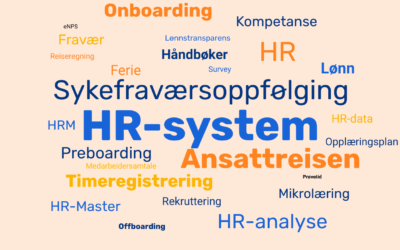What should a follow-up plan look like for sick employees?

Blog series: How to simplify and improve your workday
Øyvind Johansen
1. Identification and registration of sick leave
2. First contact and confirmation
3. Establish clear lines of communication
4. Facilitation and adaptation of work
5. Collect relevant documentation
6. Collaborate with other departments
7. Evaluate and adapt the plan
Illness situations are unique, and a follow-up plan should be flexible. Evaluate and adapt the plan in line with the employees' needs and changes in the situation.
A well-functioning sickness absence management plan is key to supporting employees on sick leave and maintaining your organization's productivity. By following these steps and ensuring the plan is flexible and tailored to individual needs, you as a manager can help create a supportive work culture and safeguard the interests of both employees and the organization.
Did you know that all sick leave reports can be received directly from NAV/Altinn and directly into 4human in the sick leave follow-up module in HRM . All follow-up plans are carried out in the system, so that you have an overview of all dialogue in the solution. All follow-up plans with full history can then be sent to your GP and NAV – digitally.
Download the guide on 7 things that streamline your business with sickness absence managementand understand how to manage the challenges that come with it.
Download guide: How to streamline sick leave follow-up in your business
Download guide: How to streamline sick leave follow-up in your business
Related posts
Course: HR Analysis – How to turn HR data into strategic advantages in 4human HRM
Data is the new currency, and HR is sitting on a gold mine! With HR analytics, you can transform information about employees, processes, and results into...
HR glossary
Here are terms and abbreviations that you who work in HR should know – whether you are new to the profession or want a refresher. To...
HR course for managers
All companies that use 4human HRM should have subject matter experts with good expertise to ensure efficient operation of the system. Expertise in...


